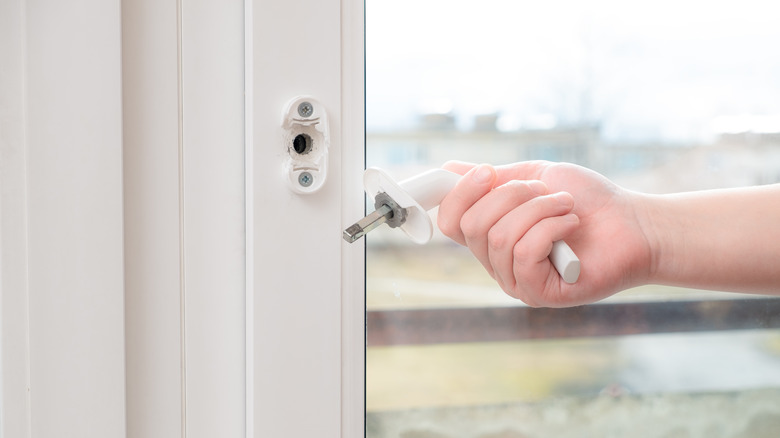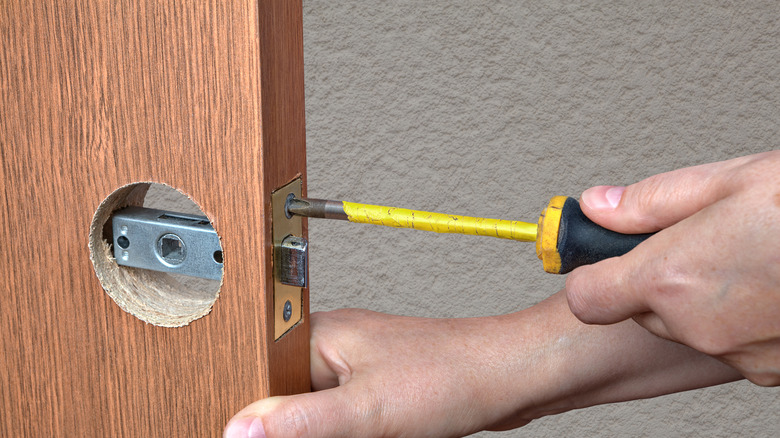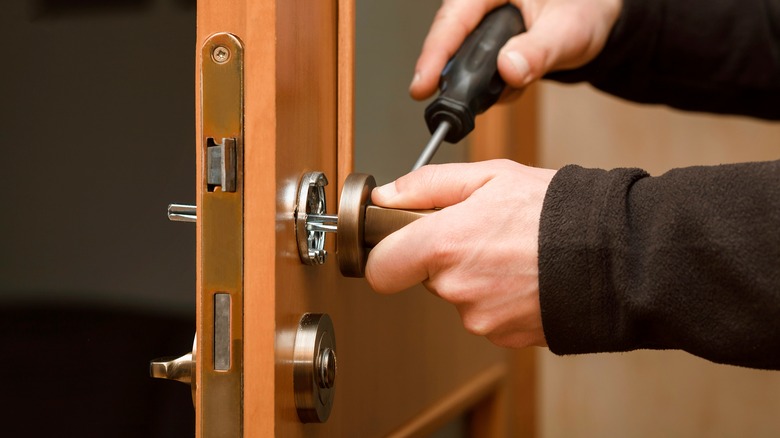The Best Way To Take Out A Broken Doorknob
While you may take it for granted every day, the common modern doorknob is a relatively new invention. While it has technically existed as long as doors have, it wasn't officially patented until 1878 by Osbourn Dorsey. Now, the doorknob is a staple of all architecture that's come thereafter (via Direct Door Hardware).
However, like all things, it is not a faultless invention. Whether old or just installed improperly, doorknobs can and do break. A broken doorknob is both incredibly annoying and dangerous, as you can get stuck in or locked out of a room, and the situation should be addressed immediately. Removing a doorknob isn't a difficult task, but to preserve the integrity of the door and the locking mechanism, if there is one, it should be done with care and intention. This is especially the case when it comes to older homes with antique hardware. Keep reading to learn the right way to remove a broken doorknob.
Phillips head screwdriver
There are a variety of reasons that doorknobs can break, including general age and wear, as well as stripped screws, a build-up of dirt, or otherwise damaged screws, according to Locksmith on Wheels. The first step to removing your broken doorknob is to assess it and figure out where and how it's attached. There will always be a screw in the locking mechanism on the edge of the door, but some knobs are also screwed on from the inside/outside.
Per Home Depot, begin by using a Phillips head screwdriver to carefully unscrew the knob from the door. If the screws are stripped or rusted, this process may be a little difficult, so take your time. After the screws are removed, you should easily be able to pull the knob off. If there are no screws, use the flat end of a thin screwdriver to pop the knob off.
Reinstalling the doorknob
Now that your broken doorknob is gone, you'll need to replace it with a new one. Before heading out to the hardware store, you'll need to know what kind of knob to get. There are generally four types of doorknobs, per Home Depot. The first is a dummy knob, which is purely decorative. Next is a passage, or unkeyed knob, which moves like a regular doorknob, but doesn't have a lock — these are often found in hallways or closets. Privacy doorknobs have a button or twist lock on one side for privacy, like those found in bathrooms or bedrooms. Last is a keyed entry knob, which has a lock and key on each side.
Now that you know what kind of knob to get, it's time to install it. Make sure the doorknob you get lines up with the screw holes already in place in your door. The first step is to make sure your latch is accurately installed — this is done by installing a latch plate that fits your door hole. It should be very easy to just tap it into place and screw it in (via WCMA Net). Once the latch is in place, slide one end of the doorknob through — it should have a steel peg showing through the latch. Then, slide on the other end, making sure the screw holes are lined up (you may need a helper for this step). Screw them in and you're done!


